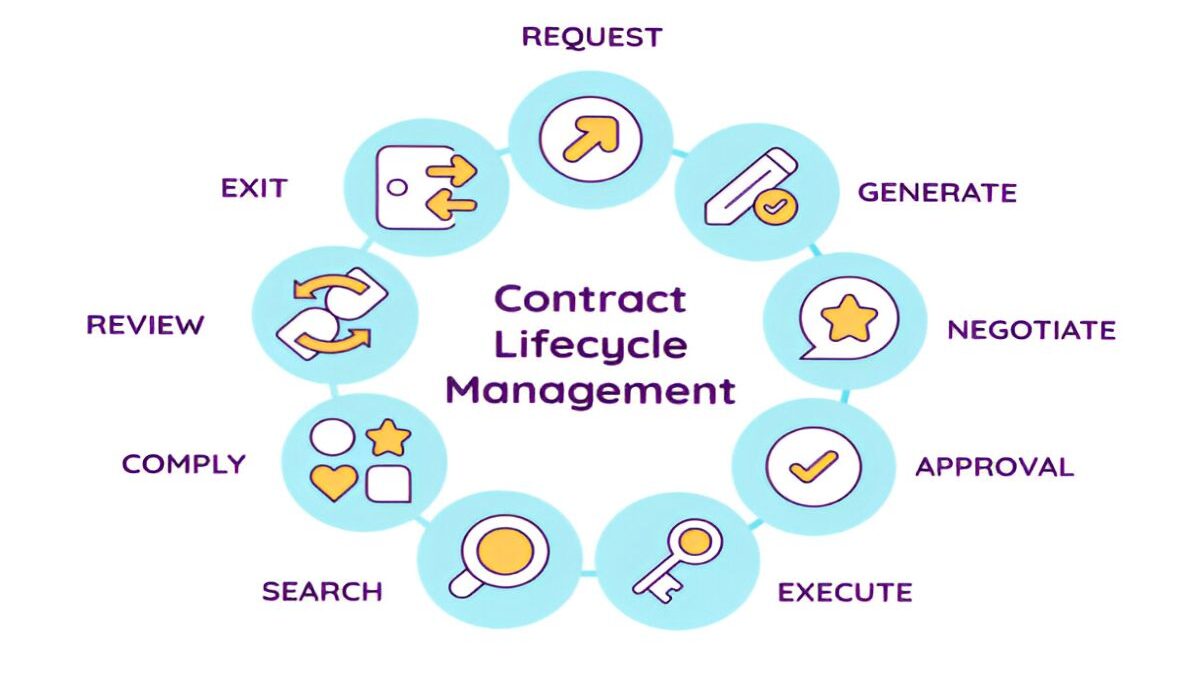There’s a folder on someone’s desktop—probably labeled “Contracts_2022_FINAL-FINAL_v4”—and it’s hiding things.
Missed renewal dates. Outdated terms. That one clause nobody read before signing.
It’s a quiet mess. But one that leaks time, money, and credibility.
The fix? It’s not more spreadsheets or longer email threads. It’s something smarter: contract lifecycle management.
Table of Contents
So, What Exactly Is Contract Lifecycle Management?
Think of CLM as the grown-up version of your duct-taped contract process. It’s a structured system that handles every stage of a contract’s life—from request to renegotiation—with fewer surprises and more accountability.
No more rogue Word docs. No more “Did Legal approve this yet?” Slack messages at 7:30 p.m.
It’s contracts… but in order.
Every Contract Has a Story—and Most Aren’t Great
Here’s how the typical contract journey goes:
- Request: Someone wants to hire a vendor. They Google last year’s agreement.
- Authoring: Legal dusts off an old template—and spends two hours updating names.
- Negotiation: PDF edits. Email attachments. “Let’s hop on a quick call.” Repeat.
- Approval & Execution: You finally get it signed… just in time to forget about it.
- Obligation Tracking: Wait, when are we supposed to deliver that report?
- Renewal or Termination: Oops. That auto-renewed six months ago. Cool.
If that made you wince, you’re not alone. Businesses lose up to 9% of their annual revenue due to contract mismanagement, according to World Commerce & Contracting.
Yes—nine percent. That’s not a rounding error. That’s someone’s bonus pool.
Why You Need a CLM Platform Yesterday
Here’s the deal: tools like Ironclad don’t just organize contracts—they transform them into operational assets.
Notable perks include:
- One place to rule them all: A central dashboard to find, track, and audit contracts.
- Automated workflows: No more chasing signatures or approvals. The software does that.
- Version control: Because nobody wants to be working off “Final_FINAL_revised_v7.”
- Analytics that matter: Know which contracts stall, which ones renew, and where the delays happen.
In regulated industries? CLM is your new compliance bestie.
Here’s How You’re Losing Money Without Realizing It
Missed obligations. Missed deadlines. Misaligned terms.
These aren’t abstract risks—they’re invoice-level losses. Deals delayed because Legal was buried. Clients lost because someone forgot a renewal clause. Fines because a clause didn’t meet compliance.
Meanwhile, your competition? They’re automating this stuff. Closing deals faster. Making legal look like a revenue driver, not a bottleneck.
You can keep working the old way. Just know that every delay has a dollar sign.
The Before-and-After Story We All Secretly Want
Let’s paint a picture:
Before CLM:
A mid-sized SaaS company managing contracts through email threads, shared drives, and vibes. Sales blames Legal. Legal blames Procurement. Finance is just confused.
After CLM:
Templates live in one place. Approvals route automatically. Renewals trigger alerts. Contracts get done in hours, not weeks. Everyone breathes easier.
What changed? They stopped improvising and started managing.
Ask Yourself This (Before It’s Q4 and Everything’s on Fire)
- Do you know where your contracts are?
- Who owns each one?
- Are you 90 days ahead of renewals—or 90 days behind?
If your answers include the words “probably,” “kind of,” or “I think,” it might be time for a CLM system.
Start with one contract type—NDAs, vendor agreements, client renewals. Roll it out, see the results, then scale.
The Bottom Line (Because Yes, This Is About Money)
Contract lifecycle management isn’t some shiny tech add-on. It’s a competitive differentiator.
It means less chaos, fewer missed opportunities, and more strategic control over how your business operates.
So the next time someone says “Let’s just tweak the old contract,” you’ll smile—because you know there’s a smarter way now.
And it’s not in a folder labeled “FINAL_v3.”

